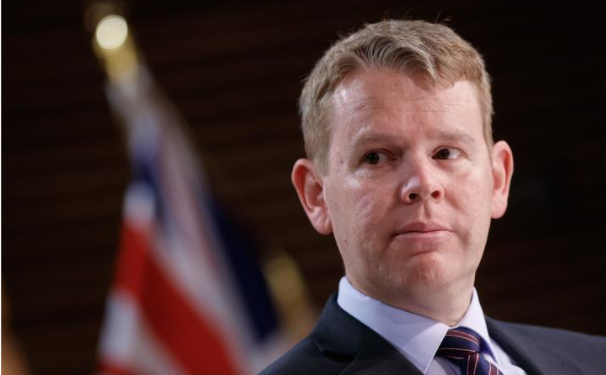-
The interval between the second dose and the booster shot reduced from 6 months to 4 months
-
Over 82 per cent of vaccinated New Zealanders eligible for a booster by end of Feb 2022
-
Eligible border and health workers required to get booster dose
-
Pre-departure test requirement to enter NZ reduced from 72 hours to 48 hours before travel
-
Phased border re-opening pushed out to the end of February
-
Temporary change to MIQ – length of stay increased to 10 days for all travellers, with no self-isolation component
-
Everyone on an international flight with a positive case to be treated as a close contact
-
All countries removed from Very High Risk country list
-
Cabinet confirms decision to roll out paediatric doses of Pfizer for 5-11s. Rollout to start from 17 January prior to school returning in 2022.
-
Cabinet confirms use of traffic light system to manage outbreak and in the event of Omicron outbreaks areas will move into the red traffic light setting
Cabinet has agreed a suite of precautionary measures to keep Omicron out of the community for as long as possible, COVID-19 Response Minister Chris Hipkins said today.
“All of the evidence so far points to Omicron being the most transmissible COVID-19 variant yet and public health advice says that soon, every case that comes into MIQ will be Omicron,” Chris Hipkins said.
“But experts still don’t know how severe it is. So while it’s sweeping the globe at a bewildering speed and appears to be the dominant variant, how sick it makes people and the impact it has on health systems is not yet fully understood.
“With over 70 countries around the world reporting Omicron cases and its high transmissibility, our plan is to get as prepared as we can by speeding up boosters and strengthening our border to keep Omicron out of the community for as long as possible.
“We start our response to Omicron with a number of advantages on our side. We have over 90 per cent and rising of the population fully vaccinated, we still have our border protections and MIQ in place, school has finished for the year and we are heading into summer when we are outdoors more.
“But we need to do more. Parts of the world are going back into lockdown and experiencing major disruption, and with these extra steps we aim to keep Omicron at bay to ensure New Zealanders get the break they deserve and businesses can remain open.
Boosters
“The first step in our plan is accelerating the booster rollout, following advice from the Director-General.
“The advice from the COVID-19 Technical Advisory Group is that shortening the period between the second and booster doses of the Pfizer vaccine is an appropriate and pragmatic step and is in line with what other countries are doing.
“Data is emerging that a booster dose with Pfizer provides better protection than two-dose course against the Omicron variant.
“While two doses is likely to hold a good degree of protection against severe disease from Omicron, a third dose is likely to offer great protection against transmission of COVID-19 and reducing the chance of more serious infections.
“The shorter timeframe will start in January and we’ll continue to follow health advice if it recommends the gap in doses can and should reduce further.
“Over 82 per cent of vaccinated New Zealanders will be eligible for a booster by the end of February 2022.
“We know that the most likely place for Omicron to enter the community is at the border, so we want all border and eligible health workers to have the extra protection the booster vaccine provides to protect them and their families.
The border continues to be our first line of defence.
“More than half of border workers eligible for a booster at 6 months have already had it – which is a great response – but we need to get the numbers up quickly.
“Cabinet has therefore agreed in principle that where workers are required to be vaccinated, that this mandate will also extend to boosters.
“Initially this will be for those workers most likely to come into contact with Omicron — border and health workers — who will be required to have their booster by the end of January, or not later six months after their second dose for those who were only recently vaccinated, and then to all others who are under a vaccination mandate by the 1st of March.
Strengthening MIQ
“We are fortunate we still have MIQ in place. Without it, Omicron would already be in the community and Christmas plans would be under threat.
“To further strengthen the border, we’re shortening the pre-departure test requirement from 72 hours to 48 hours before travel in order to assist in picking up more people with the virus before they get on a plane.
“And we’ve sought advice on implementing a requirement for all non-New Zealand citizens entering to New Zealand to have had a booster dose before flying.
“We are also making a temporary change to MIQ that increases the length of stay from 7 to 10 days. Currently returnees do their final 3 days of isolation at home. Bringing those final three days back into MIQ reduces the risk of the virus entering the community.
Changes to re-opening plan
“To slow the rapid spread we have seen overseas, we are pushing out the start of non-MIQ travel until the end of February 2022.
“There’s no doubt this is disappointing and will upset many holiday plans, but it’s important to set these changes out clearly today so they can have time to consider those plans.
“COVID-19 keeps throwing new curve balls and we have to respond in a way that continues to protect lives and livelihoods without putting in place restrictions and lockdowns unless absolutely necessary.
“Waiting till the end of February will increase New Zealand’s overall protection and slow Omicron’s eventual spread.
Use of traffic light system to manage outbreaks
“With these changes, we’re buying New Zealand as much time as we can, as scientists here and overseas race to get a clearer picture of Omicron.
“In moving to the traffic light system, we signalled that we would be adjusting to more of a reactive stance when it came to protective measures and would apply them when case numbers grew and the health system came under pressure.
“Omicron has changed that. When it does arrive, we expect that it will spread fast, and that’s what we’re seeing in other places. To slow that spread, we may use the red traffic light settings earlier on. That will give us the best chance to avoid returning to more restrictive alert level settings.
“It is not our intention to move to lockdowns unless absolutely necessary in the event of a widespread outbreak where our health system comes under considerable strain – and even then the strong preference is for the lockdown to be highly targeted.
Chris Hipkins said faced with alternative courses of action, and looking at overseas jurisdictions, Cabinet is strongly of the view that this plan is the best approach for New Zealand.
“By the end of February when we revisit the phased border re-opening, around 3 million more Kiwis will be eligible for the booster shots and the rollout to 5-11 year-olds will be well underway.” Chris Hipkins said.
-TIN Bureau




